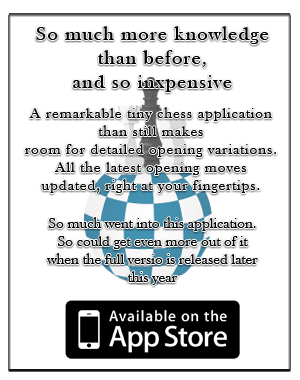BATTERY –Play THEMES (mechanisms)
Tactical ideas based on the battery-play – two one-colored pieces in one line: line discovered (queen, rook or bishop) and any (except for queen) discovering.
If an opponent’s king stands on the thematic line, then B – direct, if a king stands on the other side from the line – B – indirect.
Thematic game is based on the moves of discovering piece; its name is given to BP.
There are white, black, mixed or masked B (two or more discovering pieces), half-battery and third-battery (accordingly two and three discovered pieces of the color of discovering piece)

S. KRJUCHKOV
1st Prize “BCM”, 1935-I
Mate in 2 moves (11+13)
1. Qg3! – 2. Qf3#,
1…dxc5 2. Sb4#, 1…e5 2. Sf4#. B – direct : S+R,
1…Ke4 2. Sb2#, B – indirect : S+B,
battery function changes :
1…Rxb3 2. Se5#,
1…Sf6 2. Sc1#
mechanism of two pieces – on B. S+R two pieces influence (Rb1 and Bh8); black neutralizes one of them, and white knocks out the other on the check mate move.
If black pieces controlling white battery self-connect, we have a Manssquare mechanism.
Berger theme – one of the controlled lines from black’s pieces, having retained control, takes up the unfavorable position, and lets the discovering piece knock out both black pieces.
Moscow theme – black defenses from the threat by double check, taking up one of the thematic lines and controlling the other at the same time.
Elimination battery – due to the discovered piece leaving the thematic line;
Choice of battery – the discovered piece ambushes by preliminary moves following some discovering pieces.
BP is more various in three-mover problem, for instance, consecutive game of an opening piece at 2nd and 3rd moves, game ofhalf-battery and two-step B.
 S. VORONOV 1st Prize “64”, 1969 Mate in 3 moves (11+5) 1. Bg1! (2. Rf5+ Kd6 3. Bh2#), 1…Kxb6 2. Rb2+ Sc5 3. bxc6#, 1…Bxe8 2. Rd2+ Kd6 3. Bf5#, 1…Qxe8 2. Rf6+ Kd6 3. e7#, 1…Kd4 2. Rf3+ Kc3 3. Be4#, 1…Bf3 2. Rd2+ Kd6 3. Be4#.
S. VORONOV 1st Prize “64”, 1969 Mate in 3 moves (11+5) 1. Bg1! (2. Rf5+ Kd6 3. Bh2#), 1…Kxb6 2. Rb2+ Sc5 3. bxc6#, 1…Bxe8 2. Rd2+ Kd6 3. Bf5#, 1…Qxe8 2. Rf6+ Kd6 3. e7#, 1…Kd4 2. Rf3+ Kc3 3. Be4#, 1…Bf3 2. Rd2+ Kd6 3. Be4#.
Two-step battery-play-The consecutive reiterated game of one B is famous in the more-mover problem, the change of the discovering piece with the same discovered piece, the interplay of two Bs, assisting each other.

J. VLADIMIROV
1st Prize “Revista de Sah”, 1966
Mate in 5 (8+14)
1. Ra3!
1…d1=R 2. Sxg6+ Kc4 3. Se5+ Kd5 4. Sg7+ Kd4 5. Sf5#,
1…Rf8 2. Sxc7+ Kd4 3. Se6+ Kd5 4. Sd7+ Kc4 5. Sxb6#,
1…Sg3 2. Sxf4+ Kd4 3. Se6+ Kd5 4. Sg4+ Kc4 5. Se3#,
1…Sd3 2. Sxd3+ Kc4 3. Se5+ Kd5 4. Sxf4+ Kd4 5. Se2#.



